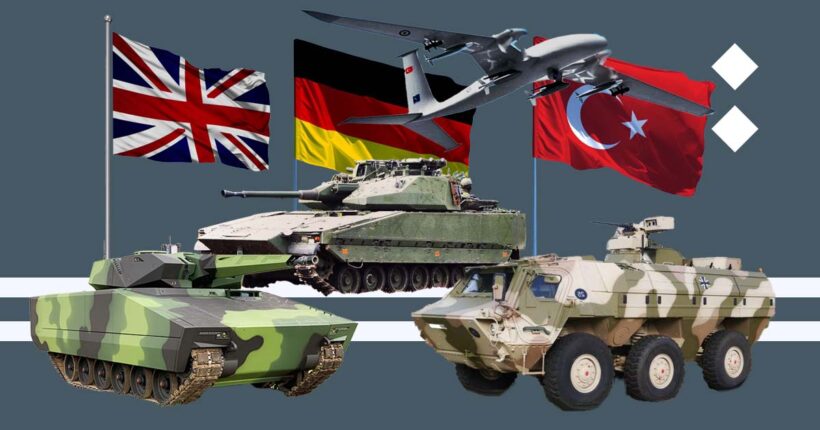
Ukraine needs modern military equipment, and doing it alone is not an option. It is enough to mention Turkey and Poland, which have a strong military industry, but their tanks and infantry fighting vehicles are usually bought abroad or developed in partnership with a notional South Korea.
Meanwhile, Ukraine is expectedly popular among arms manufacturers because there are no more political barriers, as in 2014, and Ukraine will definitely buy tens of billions worth of military equipment.
Rubryka will tell you which international companies have already entered Ukraine, whether this will kill Ukraine's own defense industry, and what problems still need to be solved.
Rheinmetall enters Ukraine to repair equipment and produce armored personnel carriers
Meet the German corporation Rheinmetall. Together with another giant, KMW, this company builds Leopard-2 tanks, PzH 2000 howitzers, Boxer armored personnel carriers, and more for the Bundeswehr and other customers. No wonder Rheinmetall has a revenue of €6.4 billion in 2022 and has over 24,000 employees. The most important thing for Ukraine is that the Germans are ready to work here now without waiting for the war's end.
In fact, they signed a joint venture agreement with Ukroboronprom, Ukraine's national defense enterprise, back in May to produce armored vehicles. Rheinmetall played into the stereotype of German thrift by finding a way not to build a plant from scratch. Instead, they rent Ukrainian production facilities, adapting them to their needs. This option will cost approximately €200 million.
"It can happen quickly. There are enough well-equipped tank plants there since Soviet times," commented Armin Papperger, the company's general director. They promise Ukraine will receive 400 tanks per year.
Let's warn you immediately: the principle not everything at once will apply here. The Germans will start with repairing Western machines already in use by the Ukrainian army — for example, the damaged Leopard-2 tanks promised to be repaired before the end of August.
Production will follow, but the first in line will be modest Fuchs armored personnel carriers, which the Bundeswehr is already replacing with more modern Boxers. However, according to the conclusion of Defense Express, this project should be taken seriously because it will be a test for Ukrainians: are we ready to produce NATO equipment together with the Europeans? After all, this is the first such experience.
Armored personnel carrier Fuchs Evolution
Of course, Ukraine will be releasing the newest version, the Fuchs Evolution. This is a machine without special combat qualities, but it is modern, fast, and can easily be converted from an ordinary armored personnel carrier into a medical transport for evacuating the wounded, a carrier of electronic warfare systems, engineering, or sapper equipment.
Tanks or infantry fighting vehicles may also appear later
If the Ukrainian defense sector passes the exam, the case will not be limited to armored personnel carriers. So, earlier, Ukraine allegedly held negotiations on the KF41 Lynx infantry fighting vehicle, and Rheinmetall is inclined to transfer its production to customer countries — for example, they opened a plant in Hungary.
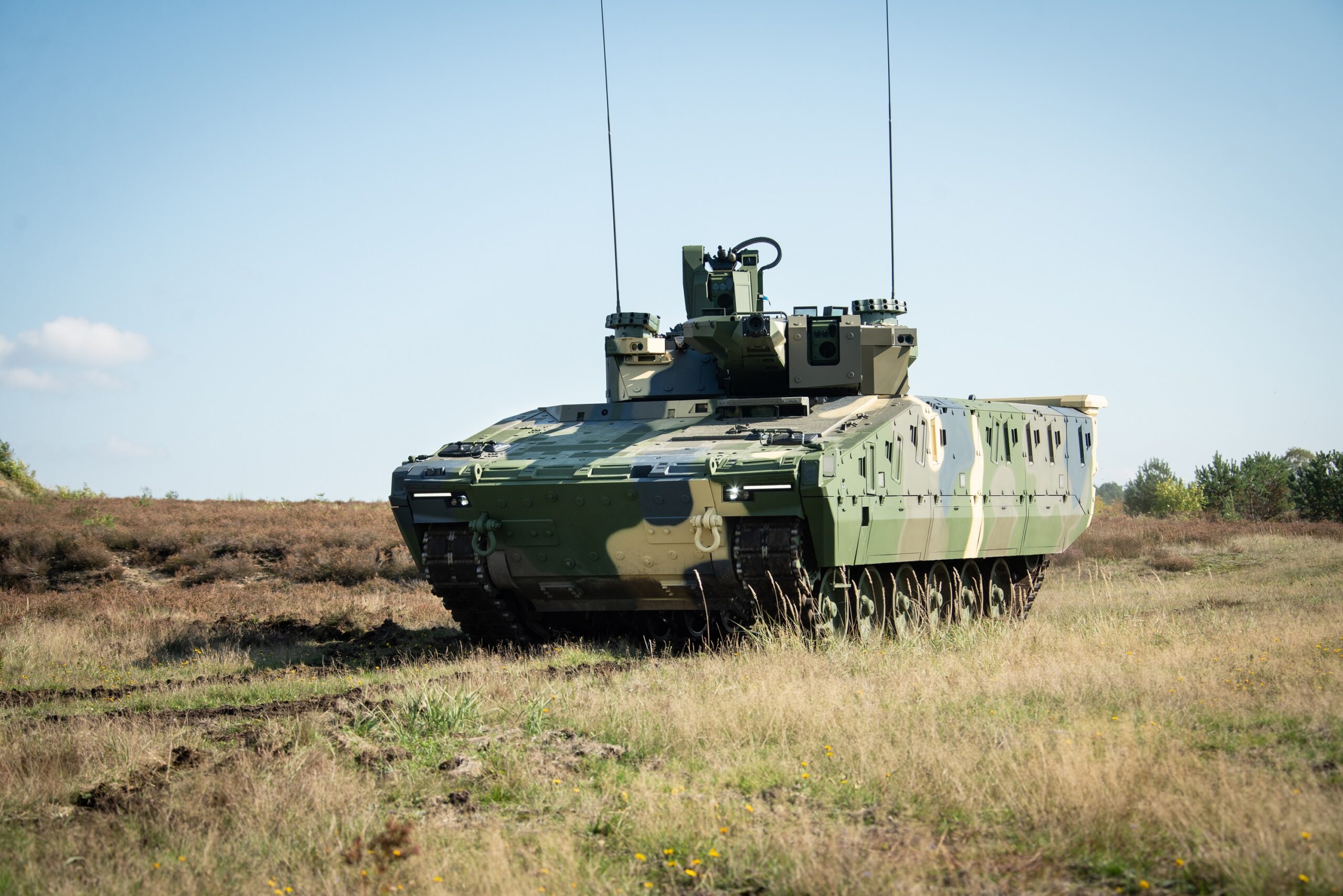
KF41 Lynx infantry fighting vehicle
The KF41 is already a heavy combat vehicle with a 35 mm gun, similar to the American Bradley. Its protection allows it to fight with infantry and armored vehicles and survive on the front lines. The IFV not only has a futuristic look but also a lot of know-how, such as a sound locator to detect fire points or computer automatic target identification.
KF41 Lynx in action
It seems that Ukraine's Ministry of Defense has already chosen another IFV as the main vehicle of the Ukrainian army. However, maybe there is a place for Lynx in the Ukrainian plans.
Four hundred tanks per year is still only the "pre-election slogan" of the company. Rheinmetall does have a KF51 tank concept with the traditional German "cat" name Panther. This is a conditional successor to the Leopard-2 because the scheme is similar, but the KF51 has many innovations.
For example, the Germans promise a larger-caliber gun, 50% longer range than conventional tank guns, multi-level armor with protection against anti-tank weapons and UAVs, digital control, a computer system for auto-search of the enemy, and cameras with which the crew will see everything around 360 degrees. Panther will also be able to carry kamikaze drones. All this will take place in about 15 to 20 months because it is during this time that Rheinmetall plans to produce tanks.
Trailer for the Panther tank: It is still far from practical implementation
However, they will have to find the KF51 body. The one in the video does not count because the bottom of the Leopard-2 tank belongs to KMW, so it will be necessary to develop a new one. There are other professional comments about Panther, such as insufficient ammunition — only 20 shells, when Abrams, for example, has as many as 55. In short, the KF51 is not a machine that will soon appear and strengthen the Ukrainian army.
Previously, Rheinmetall planned to open two more joint Ukrainian-German enterprises: one will produce ammunition, the other — air defense systems, but there are not many details.
Baykar Makina will build not only the usual Bayraktars but also cruise missile carrier drones
Baykar Makina company is well-known in Ukraine — they even have a song dedicated to their drone, and it is even popular as an image on T-shirts. The brothers Haluk and Selçuk Bayraktar publicly support Ukraine — on Independence Day, they even presented a drone for Ukraine's intelligence.
The Turks planned to open a factory in Ukraine even before the war, and on July 10, Oleksandr Kamyshyn, the head of the Ministry of Strategy and Industry, announced that the construction had started. It will be completed in two years if all goes according to plan. Legally, it is structured as follows: Baykar has registered a Ukrainian subsidiary, which will conduct all business here.
"Baykar has started constructing a factory, a research center, and an advanced manufacturing center in Ukraine, where we want to produce all the systems. Not only the fuselage, but also electronics, software — everything will be done here," said Haluk Bayraktar, the company's general director, and added that he wanted to make Ukraine the company's production base.
Thus, according to the initial plan, the conditional Bayraktar factory was supposed to occupy more than 30,000 square meters, and 300 Ukrainian engineers and technicians would work there.
It will produce the already familiar Bayraktar TB2 and two more UAVs that do not fit into the drone-bird stereotypes. Both have Ukrainian hearts, i.e., engines from Motor Sich, a Ukrainian aircraft engine manufacturer headquartered in Zaporizhzhia — another reason for Ukrainian-Turkish friendship.
The first is Bayraktar Akinci ["Akinji"]. It can weigh more than 5,500 kilograms, including bombs and missiles on board, has two aircraft engines, can fly more than 7,500 kilometers, and even looks more like a strategic bomber than a UAV.
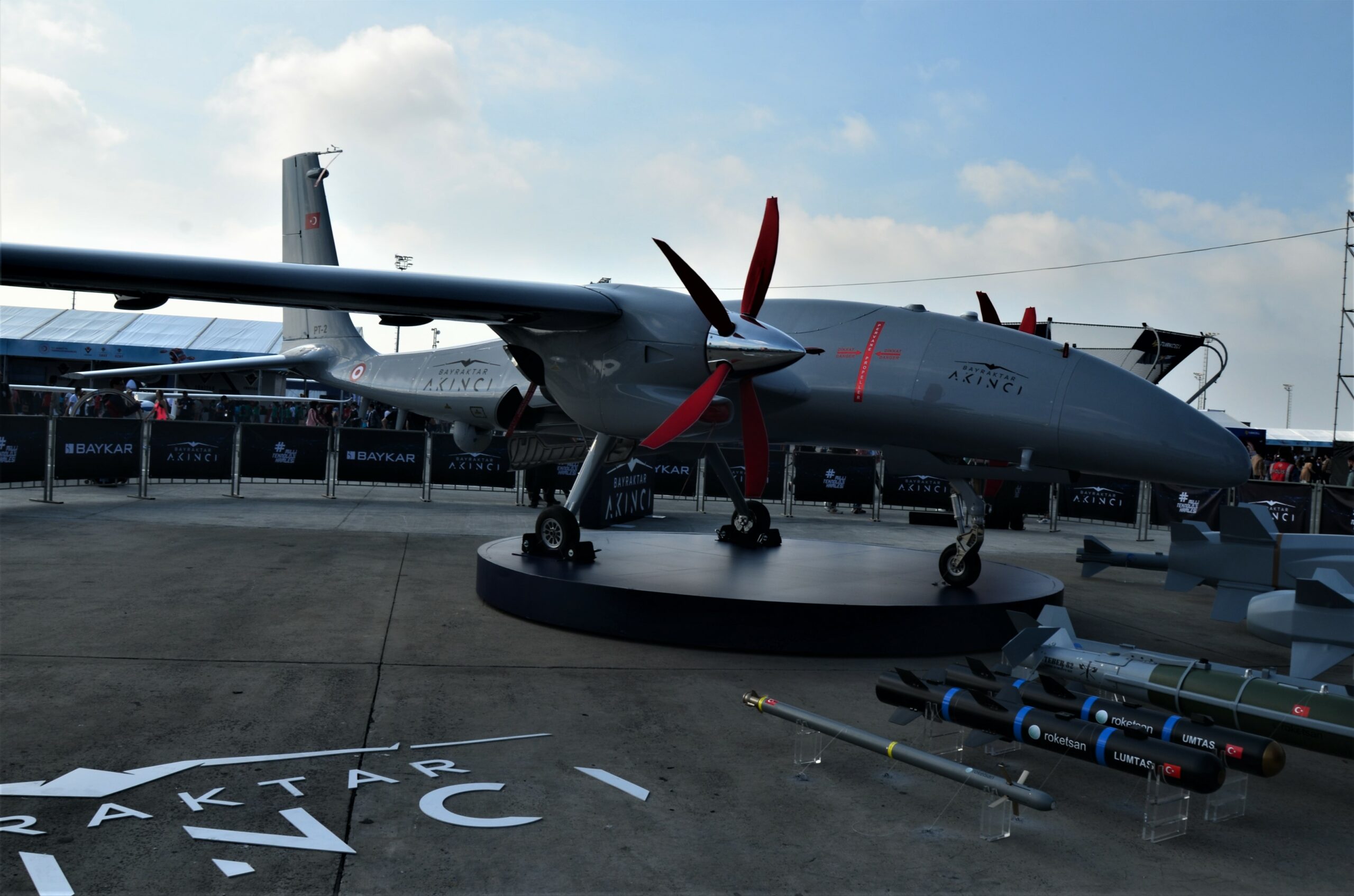
Bayraktar Akinci
It is a missile-carrying drone that destroys important targets, such as artillery or headquarters, from afar without approaching the front line — HIMARS performs a similar role.
Akinci has eight weapon mounts and can carry more than just bombs and small missiles. For example, SOM is a Turkish analog of the Storm Shadow cruise missile with a range of 250 kilometers — or more "modest" Cakir or TRG-230 — the latter hits the target 140 kilometers away.
Baykar Akinci shows its firepower
In terms of firepower, the UAV can compete with the Mi-24 helicopter or Su-25 attack aircraft.
Baykar is most proud of another drone, the Bayraktar Kizilelma. So far, there are only two prototypes that the Turks are testing in different ways. But the UAV is really revolutionary because it is built according to the scheme of an aircraft like the F-16.
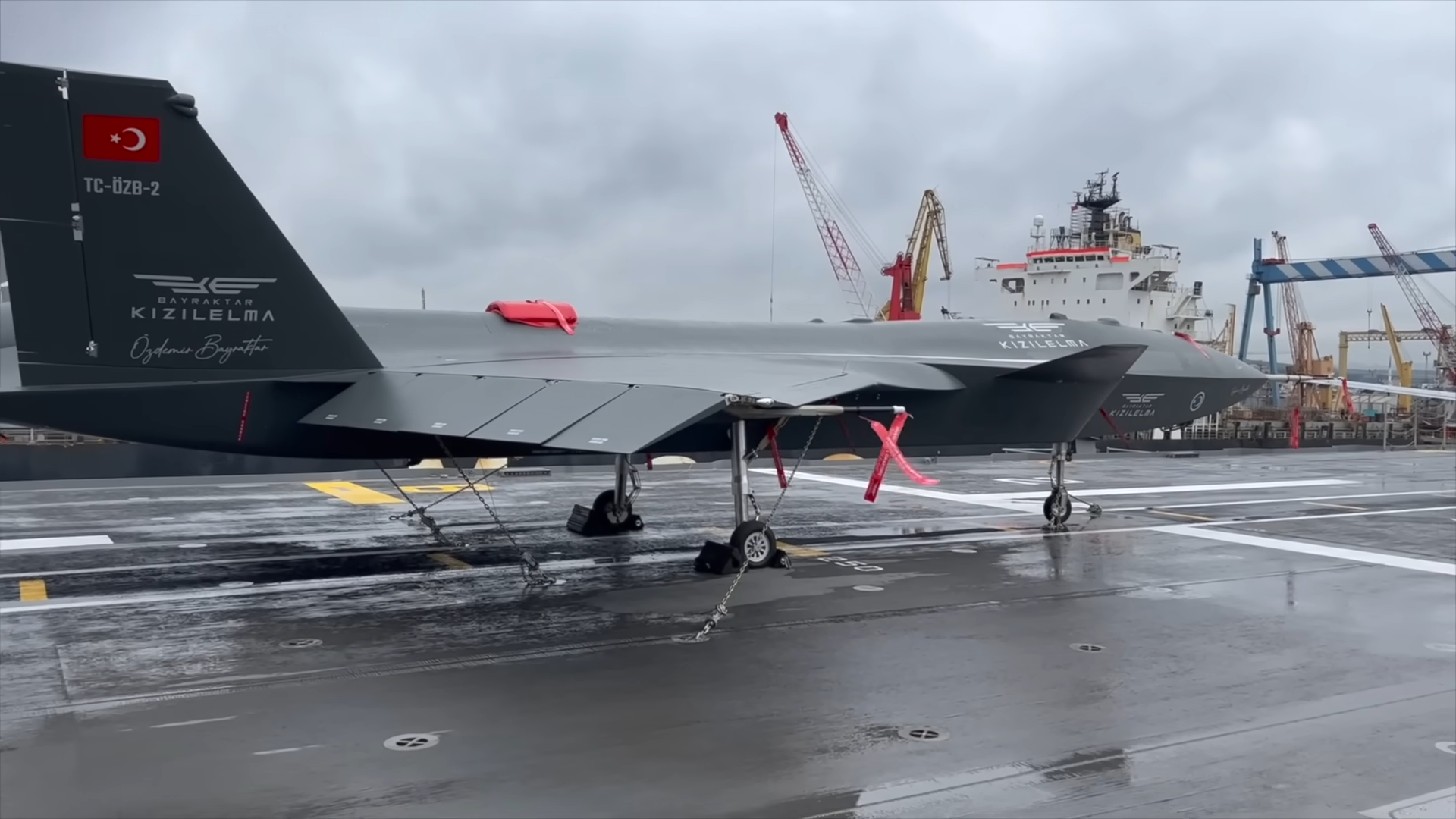
Kizilelma accelerates to 1100 kilometers per hour, can maneuver quickly, and has stealth technologies to hide from radars. The Turks position it as an unmanned fighter that can fly on missions and conduct aerial combat on a par with conventional aircraft, as its arsenal of weapons is similar to Akinci. Bayraktar says that he dreams of producing Kilizelma in Ukraine.
Heavy infantry fighting vehicles and light guns have already been agreed with BAE Systems
The August agreements with the British corporation BAE Systems are a bigger surprise. "Today we detailed our agreement regarding the joint production of the CV90 in Ukraine, the localization of production, and repairs," President Volodymyr Zelensky reported on August 19.
Of course, the British announced in May that they were entering Ukraine (production was to appear later). However, at that time, everything was at the level of negotiations: the president said that Ukraine was ready to become a regional hub for the company, and BAE executive director Charles Woodburn talked about supporting Ukraine.
However, on August 31, the corporation got down to business and opened a Ukrainian branch. Of course, there is no "work schedule" yet. Most likely, production will be launched after the war — Ukraine is interested in artillery and armored vehicles, and the equipment will be repaired in the meantime.
After all, although BAE Systems is not very well-known in Ukraine, the armed forces are already fighting with hundreds of their combat vehicles: this company that produces Challenger-2 tanks, M109 and Archer self-propelled guns, M777 and L119 howitzers, Bradley and CV90 IFVs.
In general, BAE is a real multinational corporation with divisions in 40 countries and 93 thousand employees, and its scales are appropriate. The company's aviation division manufactures Eurofighter fighters and the familiar Storm Shadow missiles, and its electronics are in American F-35s.
Meanwhile, the corporation is launching Astute-class nuclear submarines and has become the prime contractor for the British government in constructing the Queen Elizabeth-class aircraft carriers.
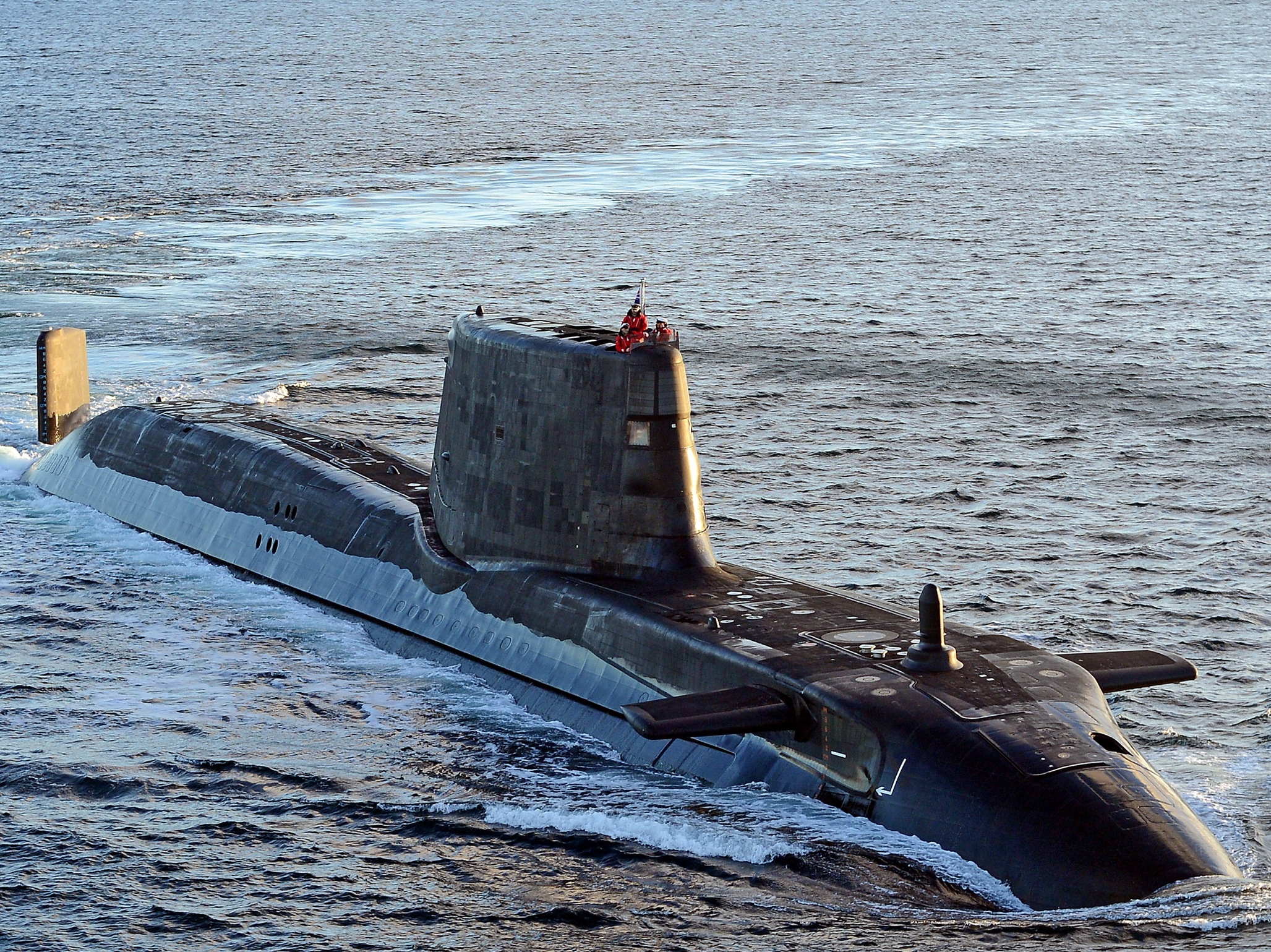
BAE Systems produces not only tanks and guns but also submarines.
Ukraine also needs submarines, but a more realistic option is the CV90 heavy infantry fighting vehicle, which the Swedish division of BAE produces. Earlier, Ukraine allegedly wanted to buy 1,000 such IFVs. Presumably, Ukraine's defense ministry seeks to completely replace Soviet vehicles with them.
It is unsurprising because the Ukrainians have already tested the CV90 on the battlefield — the Swedes handed over 50 machines from their reserves.
Most often, the CV90 is praised for its protection. The basic version withstands 30-millimeter projectiles in the front and 14.5-millimeter shells from other sides and will survive a collision with an anti-tank mine. The camouflage coating hides it from thermal imagers. They can't even be compared with the Soviet IFVs, which are vulnerable even to machine gun fire and unprotected from detonation.
Of course, this does not make the machine invulnerable — the Ukrainian army has already lost one CV90 to a grenade launcher fire. Still, it can be armored by protecting it from 30-millimeter and armor-piercing shells, cumulative weapons, and even installing a mini-air defense system that will shoot down missiles and grenades in flight.
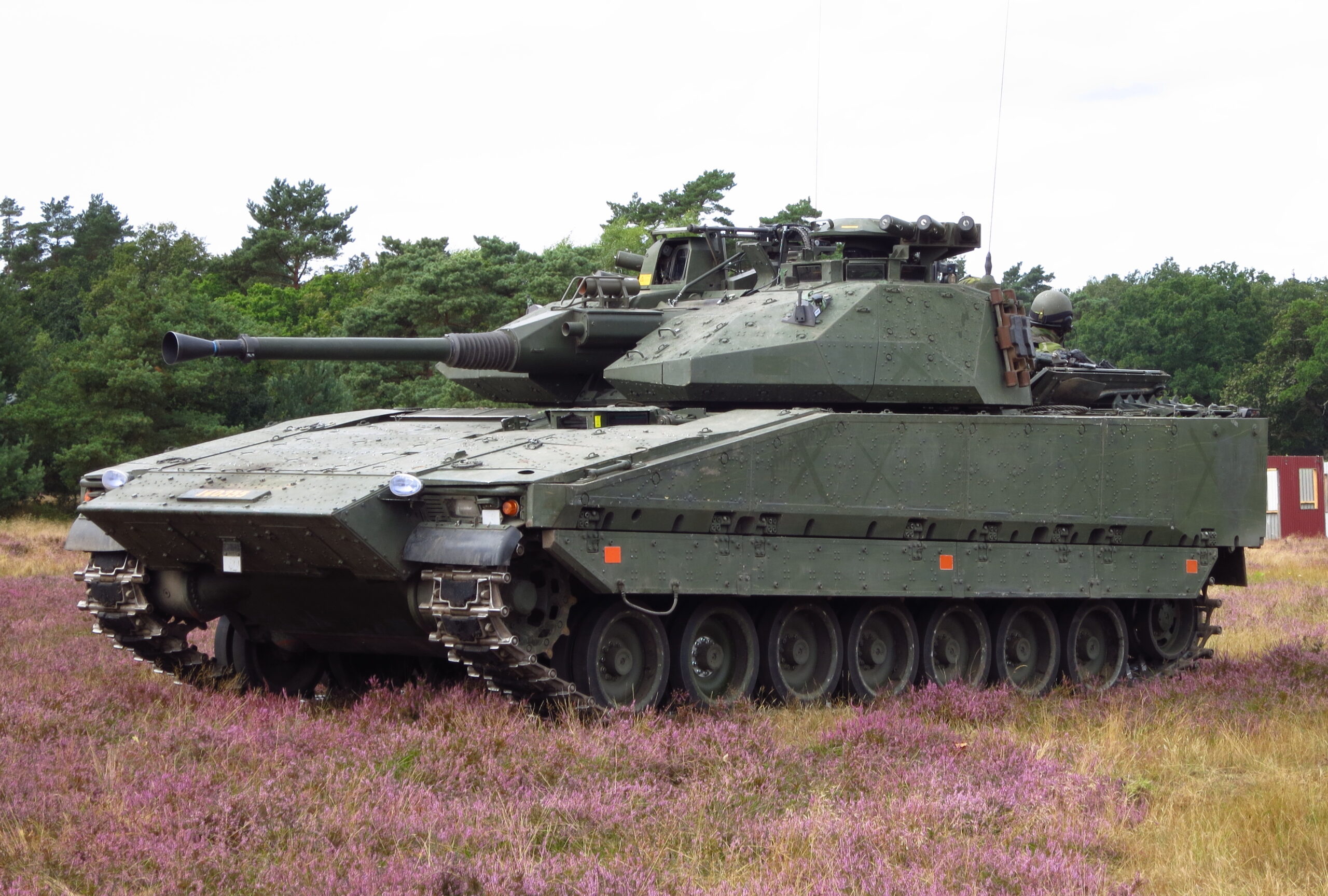
CV90 infantry fighting vehicle.
Then, the CV90 would become one of the heaviest IFVs in the world, and its Bofors 40-millimeter cannon would penetrate the armor of any Russian armored personnel carrier or IFV. This weapon is also dangerous for tanks, and there are explosive shells against infantry, plus a powerful sight with a thermal imager to aim the gun.
Of course, a thousand IFVs cost up to $10 billion — this is more than Ukraine's defense budget before the war, so all hopes are for security guarantees from the allies. After all, Ukraine is promised the Israeli scenario, which means financial aid for rearmament.
CV90 in action during exercises.
The subject of the second agreement is the not-too-well-known but useful L119 howitzer, which the BAE System will repair and manufacture in Ukraine. This is a light gun with a range of 11 kilometers, and its main role is to support the infantry with fire.
The military praises the system for its accuracy and mobility — even a Humvee can carry a howitzer. The L119 is superior to its Soviet counterpart, the D-30, and even has a fire control computer to help guide the gun.
Of course, the Ukrainians need not only the L119 but also more powerful howitzers: the famous M777, longer range and more accurate than any Soviet/Russian gun. However, it seems Ukraine will have to wait for the next negotiations.
However, there is no need to fear that foreign companies will replace Ukrainian manufacturers
In peacetime, this would have happened. Conditionally, if Ukraine buys Fuchs and Patria (a Finnish armored personnel carrier, which may also be produced in Ukraine), then the BTR-4 "will not fit" in the Ukrainian army.
Still, Ukraine has other realities. After the war, the defense forces will need hundreds of combat vehicles to replace destroyed equipment and outdated Soviet models — as long as the Russian Federation is around, there is clearly no question of disarmament. Of course, the US and other allies will stop giving Ukraine dozens of Bradleys and Strykers.
To understand the scale of rearmament in the 21st century: neighboring Poland plans to purchase 800 tanks, more than 600 self-propelled guns, 400 reconnaissance armored vehicles, 1,000 modern Borsuk IFVs, and another 700 combat vehicles of another type.
In short, Ukraine will have a place for both Fuchs and the conditional BTR-5 because the defense ministry wanted a new generation machine if it is developed. With the CV90, the situation is generally a win-win because Ukraine has never built heavy infantry fighting vehicles or large strike drones such as Akinci or Kizilelma.
Instead, we will have more resources for areas where Ukraine is already strong — such as reconnaissance and small strike drones, ATGMs, self-propelled guns Bohdana, armored vehicles, and missile program, and does not have to invent everything from scratch.
In addition, comparing Ukrainian industry to, say, Rheinmetall is a mistake. According to Oleh Katkov, chief editor of Defense Express, military equipment requires many parts and spare parts, which are cheaper to order on the spot rather than to bring them from abroad.
"These may be non-critical components, but they will be products created in Ukraine for the Ukrainian production of Western weapons. For example, Lockheed Martin needs a significant number of parts, starting with hardware and ending with electronics, which the company purchases from third-party contractors," he explained.
Plus, you can't buy new knowledge and practical experience for Ukrainians who will produce Western weapons. Here again, it is useful to look at the Poles, who started with localizations and then grew up to their own high-tech IFV Borsuk, anti-aircraft system Poprad, self-propelled guns Rak, and then they would develop new equipment together with the South Koreans.
The real challenge for Ukraine is something else: how to protect future factories from Russian missile attacks? Waiting for victory is not an option because the Russian Federation can strike in peacetime, and no air defense system can always shoot down all targets.
Ukraine's ex-minister of defense, Oleksii Reznikov, proposed to immediately build such facilities underground. Indeed, a similar approach helped the Iranians hide military factories from Israeli airstrikes, and during World War II, both the British and the Germans moved production to bomb-proof underground bunkers.
By the way, Ukraine does not plan to stop because, according to the president, in October, Ukraine will hold an international forum of weapons manufacturers where many companies from many countries of the world from different continents will come. Therefore, the main task now is to create the best possible conditions for the Ukrainian defense sector regardless of the origin of the manufacturers.







